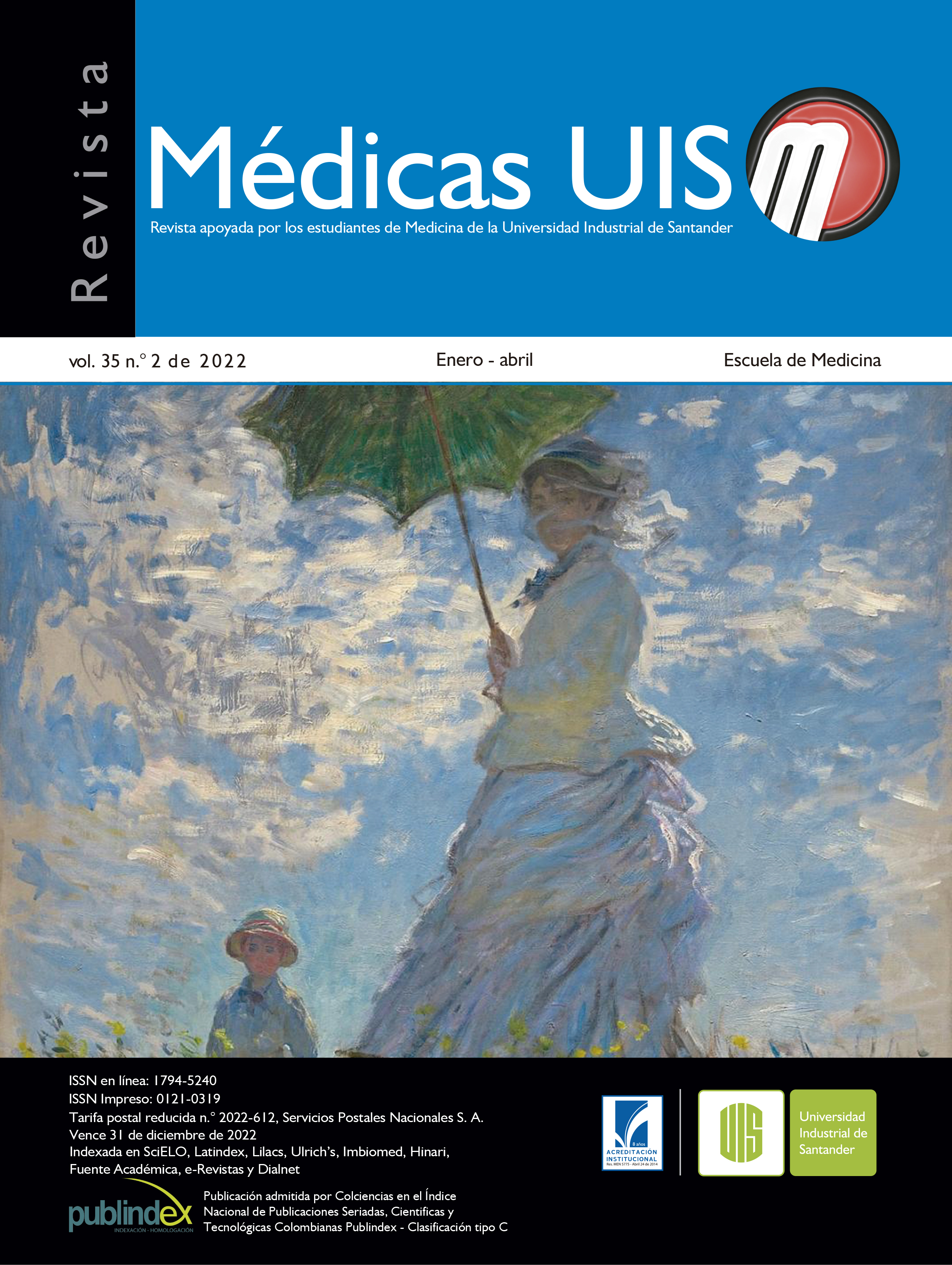Abstract
Secondary arterial hypertension is rare, it is associated with a cause that can be treatable, for which its diagnosis and treatment are not important. The diagnostic orientation is made based on the data obtained in the anamnesis and physical examination of the patient, looking for possible etiologies. We present the case of a 63-year-old man with resistant hypertension, without other symptoms or personal or family history. Initial studies were performed that documented hypokalemia, which led to the suspicion of primary hyperaldosteronism. Complementary tests were requested with high plasma aldosterone, low plasma renin activity, in addition to a diagnostic magnetic resonance imaging that showed an adrenal nodule. A right adrenalectomy was considered, with a report of pathology compatible with adrenal cortical adenoma. During the follow-up in primary care, patient presented adequate control in blood pressure figures with a decrease in the number of antihypertensive drugs required.
References
Charles L, Triscott J, Dobbs B. Secondary Hypertension: Discovering the Underlying Cause. Am Fam Physician. 2017; 96(7):453-461.
Hegde S, Aeddula NR. Secondary Hypertension. En: StatPearls [Internet]. Treasure Island (FL): StatPearls Publishing; 2022. Disponible en: https://www.ncbi.nlm.nih.gov/books/NBK544305/.
Santamaría R, Gorostidi M. Hipertensión arterial secundaria: cuándo y cómo debe investigarse. NefroPlus. 2015;7:11-21.
Rondanelli DR. Hipertensión arterial secundaria en el adulto: evaluación diagnostica y manejo. Rev Med Clin Conde. 2015;26(2):164-174.
Villamil Castañeda L, Badoui Rodríguez N. Abordaje diagnóstico de la hipertensión arterial secundaria. Univ. Med. 2018;59(1): 61-68.
Hernández H, Puello H. Hipertensión arterial secundaria Secondary arterial hypertension. Acta Médica Colomb. 2019;44(4):40–6.
Berta E, Lengyel I, Halmi S, Zrínyi M, Erdei A, Harangi M, et al. Hypertension in Thyroid Disorders. Front Endocrinol (Lausanne). 2019;10:482.
Grossman A, Messerli FH, Grossman E. Drug induced hypertension - An unappreciated cause of secondary hypertension. Eur J Pharmacol. 2015;763(Pt A): 15-22.
Lorenzo-Villalba N, Rivera-Martínez E, Artiles Vizcaíno J, Sablón-González N, Marrero-Medina I, Suárez-Ortega S. Hiperaldosteronismo primario en una población de pacientes hipertensos. Medicina (B. Aires). 2019;79(3)185–90.
Abcar AC, Kujubu DA. Evaluation of hypertension with hypokalemia. Perm J. 2009;13(1):73-6.
Nakama C, Kamide K, Kawai T, Hongyo K, Ito N, Onishi M, et al. The influence of aging on the diagnosis of primary aldosteronism [Internet]. Hypertens Res. 2014;37(12):1062-7.
Gómez RM, Marín M. Aldosteronismo primario, diagnóstico y tratamiento. En: Gómez-Llambi H, Piskorz D. Hipertensión arterial, epidemiología, fisiología, fisiopatología, diagnóstico y terapéutica. Buenos Aires: Inter-Médica; 2013. p. 447–450.
Mulatero P, Burrello J, Williams TA, Monticone S. Primary Aldosteronism in the Elderly. J Clin Endocrinol Metab. 2020;105(7) e2320–e2326.
Williams B, Mancia G, Spiering W, Rosei EA, Azizi M, Burnier M, et al. Guía ESC / ESH 2018 sobre el diagnóstico y tratamiento de la hipertensión arterial. Rev Esp Cardiol. 2019;72(2):160.e1-e78.
Lacobone M, Citton M, Viel G, Rossi GP, Nitti D. Approach to the surgical management of primary aldosteronism. Gland Surg. 2015;4(1):69- 81.
Lattin GE Jr, Sturgill ED, Tujo CA, Marko J, Sanchez-Maldonado KW, Craig WD, et al. From the radiologic pathology archives: Adrenal tumors and tumor-like conditions in the adult: radiologicpathologic correlation. Radiographics. 2014;34(3):805-29.
Moreira SG Jr, Pow-Sang JM. Evaluation and management of adrenal masses. Cancer Control. 2002;9(4):326-34.
Bourdeau I, El Ghorayeb N, Gagnon N, Lacroix A. MANAGEMENT OF ENDOCRINE DISEASE: Differential diagnosis, investigation and therapy of bilateral adrenal incidentalomas. Eur J Endocrinol. 2018;179(2):57-67.
Auñón P, Morales E, García A, Gutiérrez E, Sevillano Á, Segura J, et al. Hiperaldosteronismo primario como causa de hipertensión arterial maligna: una etiología excepcional. NefroPlus 2017;9(2):84-91.
Kohlenberg J, Bancos I. 67-Year-Old Woman With an Adrenal Mass. Mayo Clin Proc. 2018;93(3):23–27.
Zhang H, Ziwei F. Adrenal neuroblastoma in an elderly adult: a case report and review of the literature. J Med Case Reports. 2019;13(284):1-4.
Susheela AT, Eldib H, Vinnakota D, Bial A, Ali S, Koh H, et al. Recurrent Pheochromocytoma in an Elderly Patient. Medicina. 2020;56(6):316.

This work is licensed under a Creative Commons Attribution 4.0 International License.
Copyright (c) 2022 Médicas UIS
